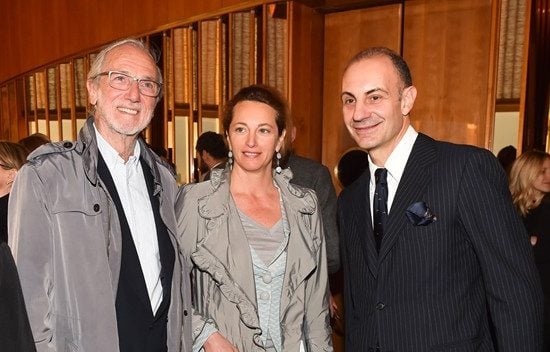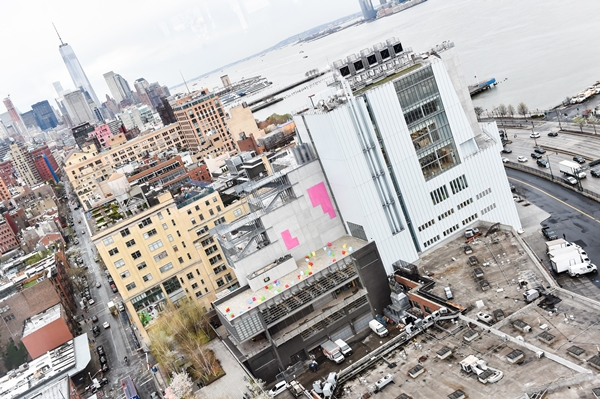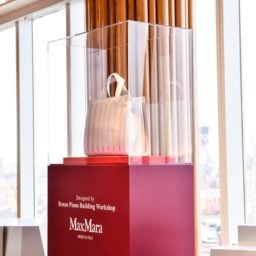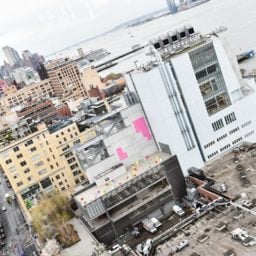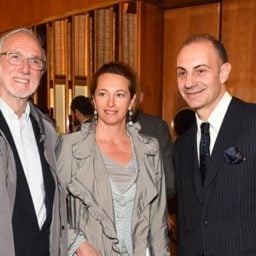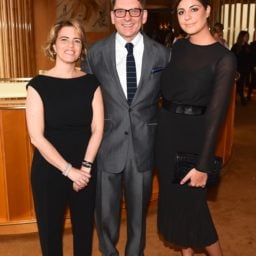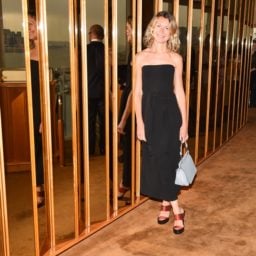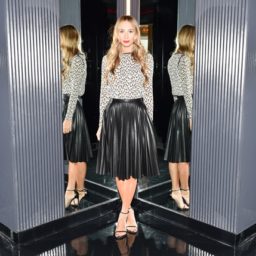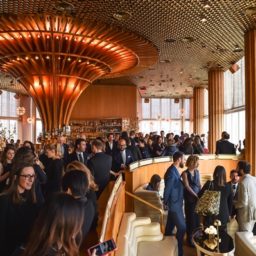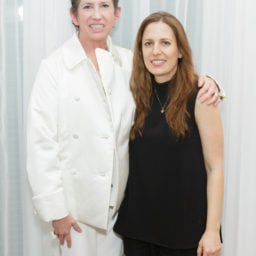Last night, in the rooftop of the Standard Hotel, well-heeled guests sauntered into the hotel’s 18th floor art deco club, Boom Boom Room, to celebrate the launch of the new handbag by Italian fashion brand Max Mara designed with Renzo Piano Building Workshop and inspired by the brand new Whitney museum (see Look Inside the New Whitney Museum and Opening Preview and Does the New Whitney Museum Herald a Golden Age for New York Institutions?).
The smart choice of venue gave the guests—including W Magazine’s Stefano Tonchi, Max Mara chairman Luigi Maramotti, and collector Beth Rudin DeWoody—a bird’s eye view of the new museum, all 220,000 square foot of it. Most eye-catching of course, was the museum’s expansive terrace space with color-blocked chairs in orange, green, blue, and yellow—an installation by Mary Heilmann.
The family-owned fashion house has had a long-standing relationship with the Whitney (see 10 Fun Facts About the Whitney Museum). But besides being art patrons, the Maramotti family in 2008, unveiled a 43-room gallery in one of the company’s former manufacturing plants in Reggio Emilia. The company also awards a Max Mara Art Prize for Women through a partnership with the London-based Whitechapel Gallery.
When asked about how Max Mara merged the contemporary aspect of the museum with the tradition of the brand, Ian Griffiths, the company’s creative director, replied “Our bags are produced by Tuscan craftsman using techniques that we have developed over centuries. But in order to achieve this new shape, we had to use laser techniques to mark out those ribs. So it was a question of allying craft with technology. That for us is the meaning of design. That’s how it ties up modernity with tradition.”
How was the bag inspired by the museum? Griffiths, who has been with the company for 27 years, said that both he and Piano wanted the bag to “echo as far as possible the appearance of the building itself.” Which it does, spectacularly, with subtle ribs equidistant from each other on the facade of the bag.
The handbag will be available in three different sizes and four different colors: limited edition slate, black, bordeaux, and tan.
We’ll take one of each, please.

